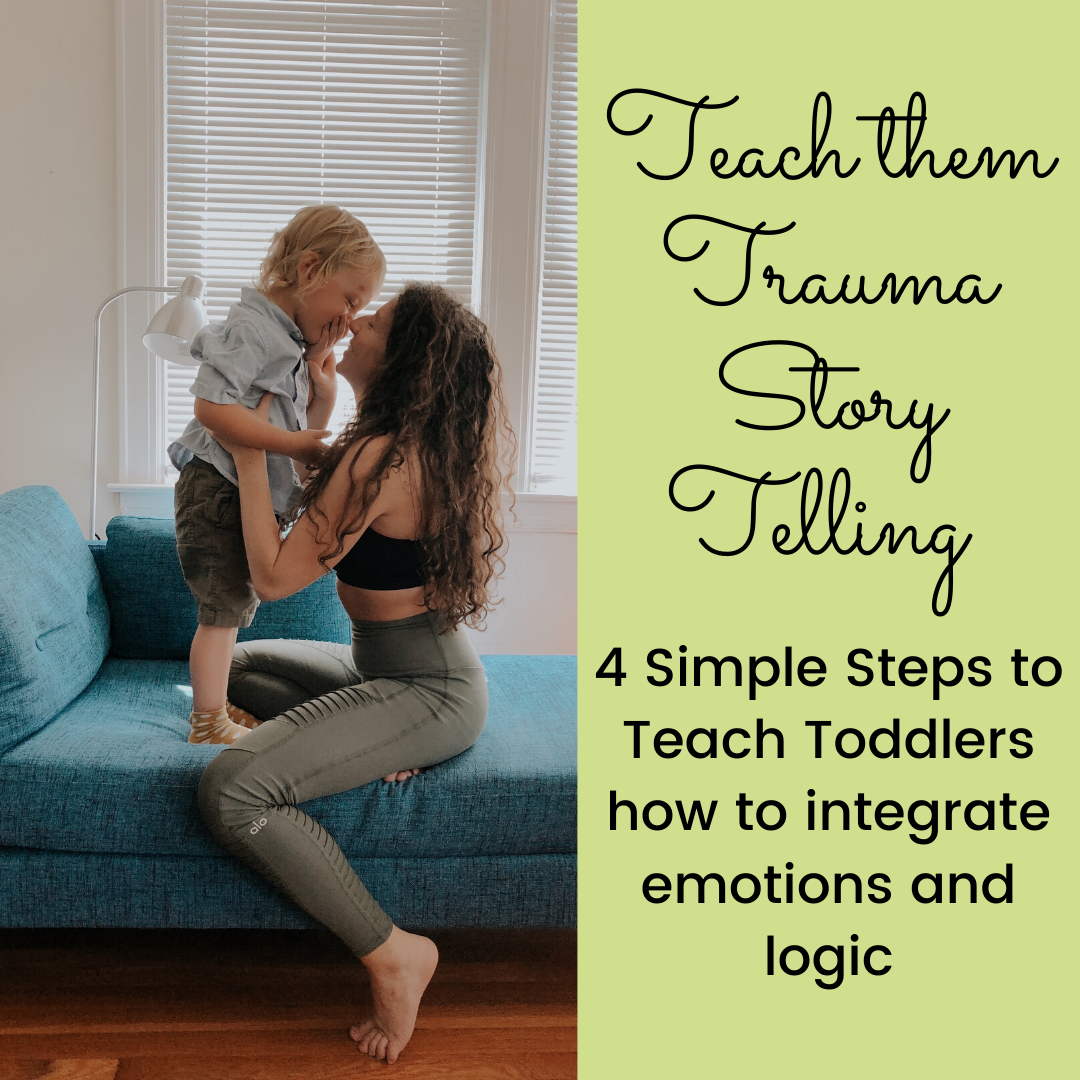My 3 year old nephew witnessed a car accident outside the front of our house. It sounded awful. It looked awful. There was a baby in one of the cars. So initially there was a lot of panic and high energy. But after everyone was moved out of the cars and off the street it was clear that everyone was safe and uninjured. He talked about it endlessly in the weeks that followed. A few weeks later, a delivery truck side-swiped my mom’s car which was parked right outside the front of the house. Once again, my nephew watched the scene unfold from the window. While he was watching my mom handle the accident, he started to talk about a “white truck”. He was remembering the previous accident. So I began to engage him in story-telling the two accidents to me. Story-telling is an incredible tool for helping toddlers process difficult experiences. In their developing minds, emotions take precedence to logic. While they are in the early stages of learning rational thinking, emotional influence is VERY much in control. If they are unable to process and integrate the rational with the emotional, they become stuck in the emotional which can morph daily experiences into terrifying memories that may stall them from moving passed it. Story-telling gives children the tools to integrate overwhelming emotion with logic and therefore process out the scary, difficult, or unhappy experiences they encounter.
Here’s how it works:
#1. Allow them to tell the story of the experience (as many times as it takes to process). This may mean hearing the story for days, weeks, or even months. With each retelling remember to emphasize the logical progression of events, use each retelling to begin to include rational thinking into the emotion of the experience.
#2. Prompt them (only when they need your guidance) to retell the story by adding linear facts. Guide them with …”and then everyone got out of their cars” Refrain from controlling the narrative, you are simply guiding them through the memory.
#3. Allow them to pause, skip, and fast forward - DO NOT push them through the parts that are most difficult for them; they will tell those parts as logic begins to integrate with emotion and they feel comfort in the ending.
#4. ALWAYS end with and EMPHASIZE the resolution.
Here’s Why it works:
Memory and interpretation will focus on the emotional drive of the experience, what we FEEL. If they felt fear, they will remember the scenario with fear and they may make fear based associations because of the drive of the feeling. By repeatedly telling the story, adding the facts, and EMPHASIZING the resolution; you will help them integrate logic into the memory, engaging rational thinking with their emotional memory. They may still feel fear but they will also begin to accept that they weren’t alone, that someone helped, that the car got fixed, etc. And that will begin to work on the memory and adjust the new remembered experienced.
My nephew still occasionally tells this story every now and then but from the retelling he has learned and added details about mechanics (car doctors), explains that people showed up to help, and that (in these two accident scenarios) no one was hurt. His rational retelling has peaked his curiosity about “car doctors” that fixed the broken cars. Mechanics are now important characters in his playing. I’m sure there is still fear wrapped up in the memory but he’s learning that something can be scary and still turn out okay.



